


Crafting Beauty With Thread
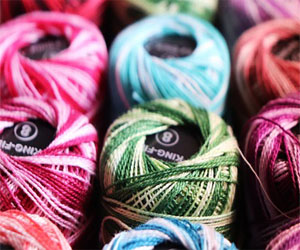
Decorative stitching is a versatile and captivating technique that elevates fabric and textiles to new heights of elegance and style. This intricate form of handiwork is more than just a means of joining fabric; it's a way to add depth, texture, and visual interest to clothing, accessories, and home decor. From embroidery to creative embellishments, decorative stitching celebrates the art of sewing in all its creative glory.
Exploring The Rich World Of Decorative Stitching: Decorative stitching encompasses a wide array of techniques, each offering a unique way to embellish and beautify fabrics. While the art of sewing often serves a functional purpose, decorative stitching goes beyond utility to infuse items with a touch of artistic flair.
Embroidery: The Timeless Embellishment
Embroidery is one of the most celebrated forms of decorative stitching. This intricate craft involves the use of various stitches, threads, and colors to create patterns, designs, and images on fabric. Whether it's delicate floral motifs, intricate lacework, or intricate monograms, embroidery adds a personal and artistic touch to everything from clothing to home furnishings.
Quilting: Stitching Stories In Fabric
Quilting is another form of decorative stitching that marries functionality with artistic expression. Quilters use stitches to join layers of fabric and create intricate designs that often narrate stories or reflect cultural traditions. From patchwork quilts to intricately stitched bedspreads, quilting is a testament to both creativity and craftsmanship.
Appliqué: Layering For Impact
Appliqué is a technique that involves sewing one piece of fabric onto another, often in a layered or patchwork manner. It allows for the addition of different textures, colors, and patterns to create striking and vibrant designs. Appliqué is commonly used in clothing, accessories, and textile art.
Beadwork And Sequins: Adding Glamour And Sparkle
Decorative stitching also encompasses the use of beads, sequins, and other embellishments to elevate textiles. These tiny elements are sewn onto fabric in intricate patterns to add glamour, sparkle, and a touch of opulence. Beaded embroidery is commonly found on wedding gowns, eveningwear, and accessories.
Cross-Stitch: Traditional And Ornamental
Cross-stitch is a form of decorative stitching that creates intricate, symmetrical patterns. Typically associated with counted-thread embroidery, cross-stitch involves making "X" stitches to form shapes, motifs, and lettering. It's often used to add ornamental detailing to fabric.
Modern Innovations: In the modern era, decorative stitching has embraced innovation. Computerized sewing machines and digital technology have enabled the creation of intricate, precise designs. Artists and crafters combine traditional techniques with digital designs to produce stunning contemporary pieces.
Personal Expression: Decorative stitching offers a unique means of personal expression. Whether you're a seasoned crafter or a novice, it allows you to infuse your unique personality into your creations, from personalized clothing to home decor.
Decorative stitching is a testament to the creative and artistic potential of sewing. It transforms everyday fabrics into works of art, infusing them with beauty, personality, and cultural significance. Whether you're preserving traditional crafts or pushing the boundaries of modern design, decorative stitching allows you to explore the art of sewing in all its diverse and creative glory. It celebrates the fusion of function and artistry, proving that beauty can be stitched into the very fabric of our lives.
Crafting Innovation In A Glass
 The Rise Of The Microbrewery: The microbrewery movement gained momentum in the late 20th century as a response to the dominance of large, corporate breweries. These passionate and entrepreneurial brewers sought to reintroduce diversity and flavor into a beer market that had become inundated with mass-produced, homogenized brews.
The Rise Of The Microbrewery: The microbrewery movement gained momentum in the late 20th century as a response to the dominance of large, corporate breweries. These passionate and entrepreneurial brewers sought to reintroduce diversity and flavor into a beer market that had become inundated with mass-produced, homogenized brews.
Independent Spirit And Innovation: Microbreweries thrive on their independent spirit. They are often born out of a brewer's desire to experiment, push boundaries, and craft beers that are unique and distinct. This spirit of innovation has led to a remarkable range of beer styles and flavor profiles that cater to every taste preference. From hoppy IPAs to rich stouts and sours, microbreweries offer a diverse array of options for beer enthusiasts.
Craftsmanship And Quality: One of the cornerstones of microbreweries is their unwavering commitment to quality. Brewmasters at these small establishments are deeply involved in every step of the brewing process, from selecting the finest ingredients to meticulously monitoring each batch. The focus on craftsmanship ensures that the beer produced is of the highest quality.
Community And Local Engagement: Microbreweries are not just places to brew and enjoy beer; they often serve as community hubs. Local microbreweries foster a sense of belonging, with patrons frequently interacting with brewers, learning about the brewing process, and enjoying unique, small-batch brews. They often feature taprooms, events, and tours, providing a social space where beer lovers can come together and celebrate their passion.
Economic Impact: In addition to providing a gathering place for communities, microbreweries contribute significantly to the local economy. They create jobs, source ingredients locally when possible, and attract tourists to the area. The craft beer industry has also led to the growth of related businesses, such as craft beer bars, restaurants, and beer tourism.
Unwinding Your Senses And Elevating Well-Being
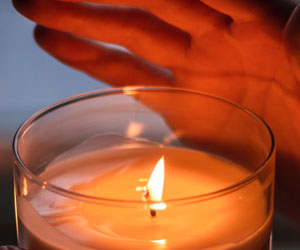 The Science Of Aromatherapy
The Science Of Aromatherapy
Aromatherapy is a holistic healing practice that uses essential oils, which are extracted from plants, to promote physical and emotional well-being. These essential oils contain natural compounds that have a range of therapeutic benefits. When inhaled, these compounds interact with the olfactory system and the brain, triggering various responses.
Aromatherapy through candles operates on this very principle. As the candle burns and releases the fragrance of the essential oils blended into the wax, these scents enter our respiratory system, affecting our mood, stress levels, and overall health.
Choosing The Right Aromatherapy Candle
The journey into the world of aromatherapy candles begins with selecting the right candle for your needs. Here are a few factors to consider:
Fragrance: The choice of fragrance depends on your goals. Lavender is known for its calming properties, making it perfect for relaxation and sleep. Citrus scents like lemon and orange are invigorating and ideal for boosting energy and focus.
Strategies For Success
 Stress: Constantly trying to meet tight deadlines and fulfill numerous commitments can lead to elevated stress levels. This stress can, in turn, affect your overall health, including your sleep, immune system, and emotional well-being.
Stress: Constantly trying to meet tight deadlines and fulfill numerous commitments can lead to elevated stress levels. This stress can, in turn, affect your overall health, including your sleep, immune system, and emotional well-being.
Burnout: A demanding schedule, when not managed properly, can lead to burnout - a state of physical, emotional, and mental exhaustion. Burnout can negatively impact your performance, creativity, and enthusiasm for life.
Health Issues: Neglecting self-care, such as exercise, proper nutrition, and relaxation, can result in various health problems, including weight gain, cardiovascular issues, and mental health challenges.
Strategies For Navigating Demanding Schedules
To tackle the challenges of demanding schedules and maintain a healthy work-life balance, consider implementing the following strategies:
Prioritize Tasks: Start by identifying your most important tasks and responsibilities. Focus on these first and allocate your time accordingly. Use to-do lists or time management apps to help you stay organized.
Set Boundaries: Learn to say no when necessary. It's crucial to establish boundaries that protect your personal time and prevent over-commitment.
Delegate: If possible, delegate tasks to others, whether at work or home. Sharing responsibilities can lighten your load and free up time for more critical activities.
Time Management: Improve your time management skills by setting specific time blocks for various tasks. Avoid multitasking, as it can lead to reduced productivity and increased stress.
Self-Care: Prioritize self-care activities, including regular exercise, healthy eating, adequate sleep, and relaxation techniques. Caring for your physical and mental health is vital in managing the demands of a busy schedule.

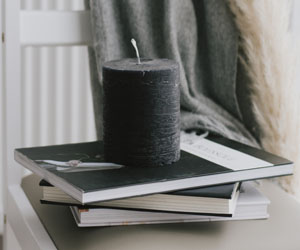
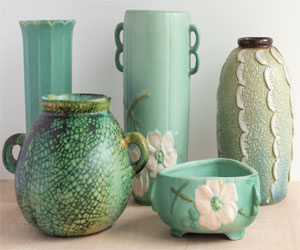

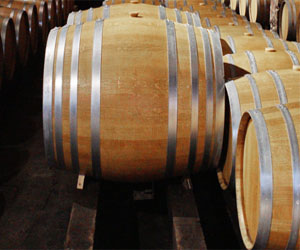

The Art Of Shaping Clay On A Potter's Wheel
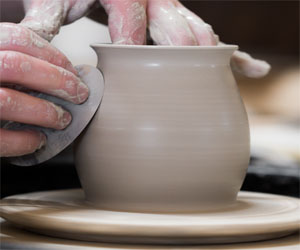 A Glimpse Into History: Wheel-throwing has an ancient history, with its origins dating back to around 4000 BCE in regions such as Mesopotamia and China. These early potters used simple, hand-driven wheels to craft their vessels. The technology evolved over time, leading to the development of foot-powered and, eventually, electric pottery wheels, which are widely used today.
A Glimpse Into History: Wheel-throwing has an ancient history, with its origins dating back to around 4000 BCE in regions such as Mesopotamia and China. These early potters used simple, hand-driven wheels to craft their vessels. The technology evolved over time, leading to the development of foot-powered and, eventually, electric pottery wheels, which are widely used today.
The Process: The wheel-throwing process begins with a lump of clay centered on the wheel head. Proper centering is a crucial skill that requires careful hand and foot coordination to achieve balance and symmetry. Once centered, the potter uses their hands to shape the clay, pulling it upward and outward, manipulating the form as it spins on the wheel. The wheel's rotation allows for the creation of consistent and precise shapes.
Technique And Skill: Wheel-throwing is a craft that demands patience and skill. Potters must control the speed and pressure applied to the clay to achieve the desired form. Various tools, such as ribs and wooden or metal shaping tools, are used to refine the shape, create textures, and add decorative elements. The level of precision required in wheel-throwing makes it both an art and a science, where mastery comes through experience and practice.
Functional And Artistic Pottery: One of the most remarkable aspects of wheel-throwing is its versatility. Potters can create a wide range of functional items, including cups, bowls, plates, and vases. The uniformity and precision offered by wheel-throwing make it well-suited for producing pottery used in daily life. At the same time, many artists utilize the wheel-throwing technique to create decorative and sculptural pieces, pushing the boundaries of what can be achieved with clay.
Tips For Small And Large Gardens
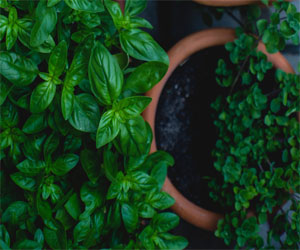 Select containers with proper drainage and consider hanging pots, window boxes, or vertical herb gardens.
Select containers with proper drainage and consider hanging pots, window boxes, or vertical herb gardens.
Group compatible herbs in a single pot or use tiered plant stands to stack multiple containers vertically.
Regularly prune and harvest your herbs to maintain their size and prevent overcrowding.
Indoor Herb Gardens
If you have limited outdoor space, an indoor herb garden can provide fresh herbs year-round. Some tips for indoor gardening include:
Place pots on windowsills or under artificial grow lights to ensure they receive adequate sunlight.
Consider using self-watering pots or hydroponic systems to make indoor herb gardening more convenient.
Be attentive to indoor humidity and ventilation to prevent issues like mildew or pests.
Keep pots near the kitchen for easy access to fresh herbs while cooking.
Large Herb Gardens
Garden Layout
Larger garden spaces offer more opportunities for creativity and plant diversity. Consider these strategies for maximizing your herb garden space:
Design your garden with clearly defined paths and designated planting areas to optimize organization and accessibility.